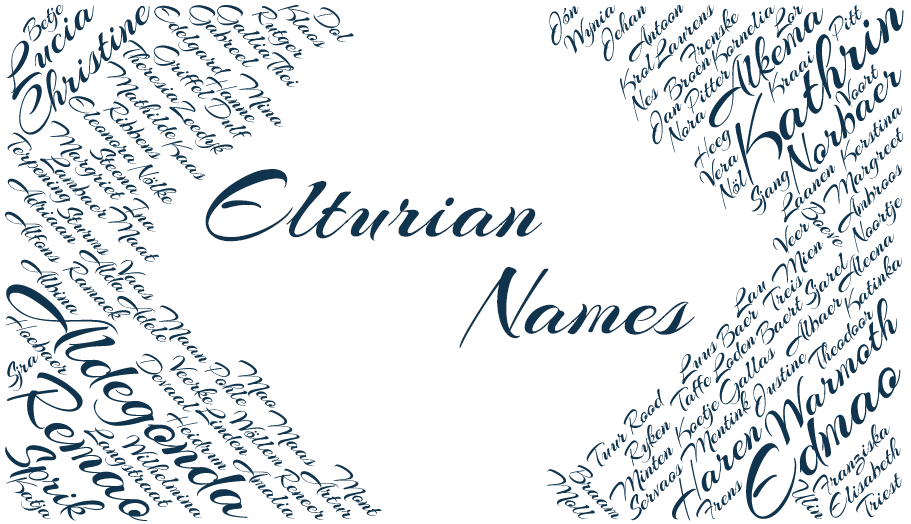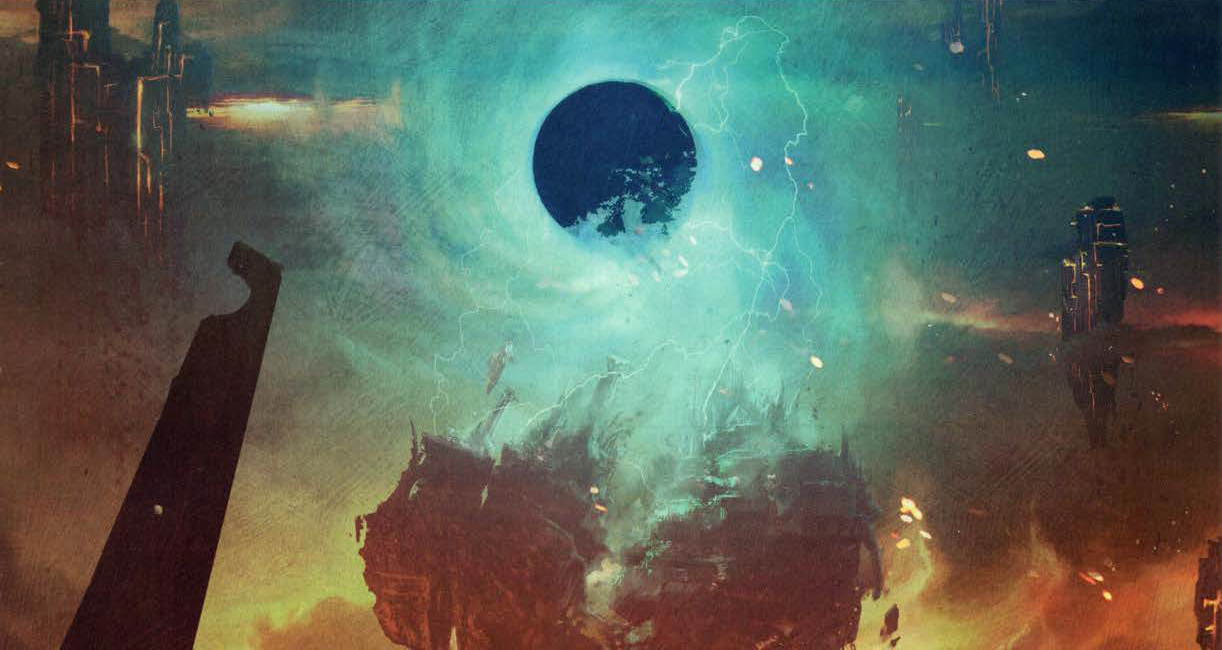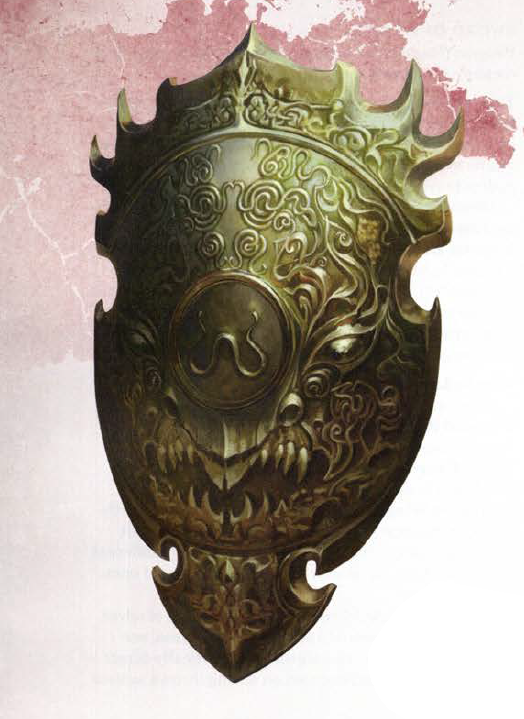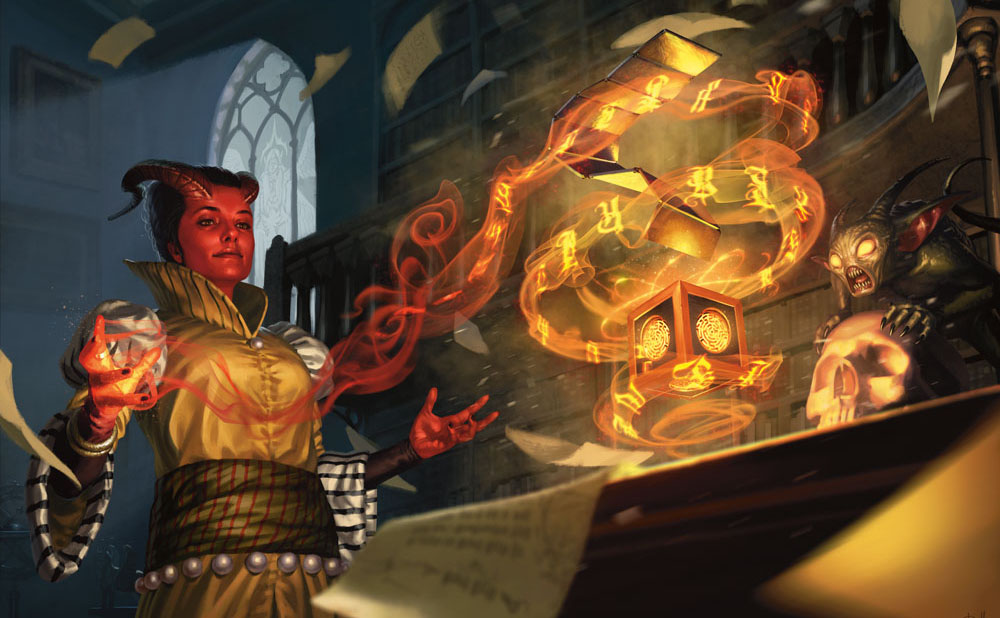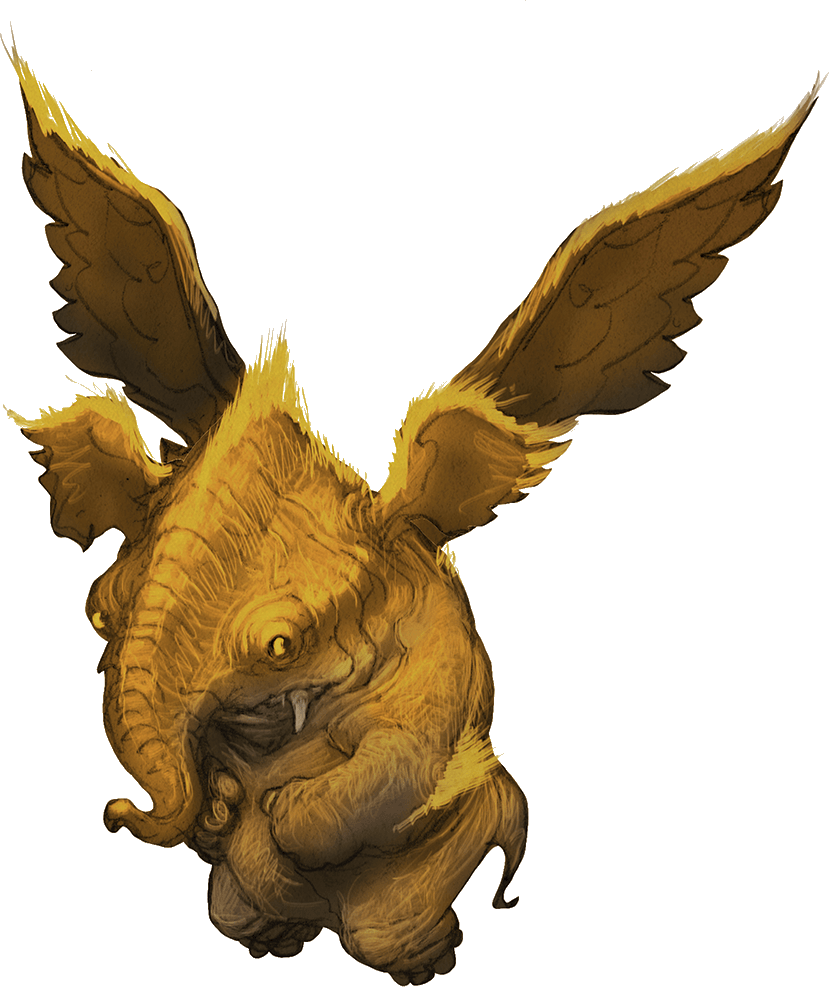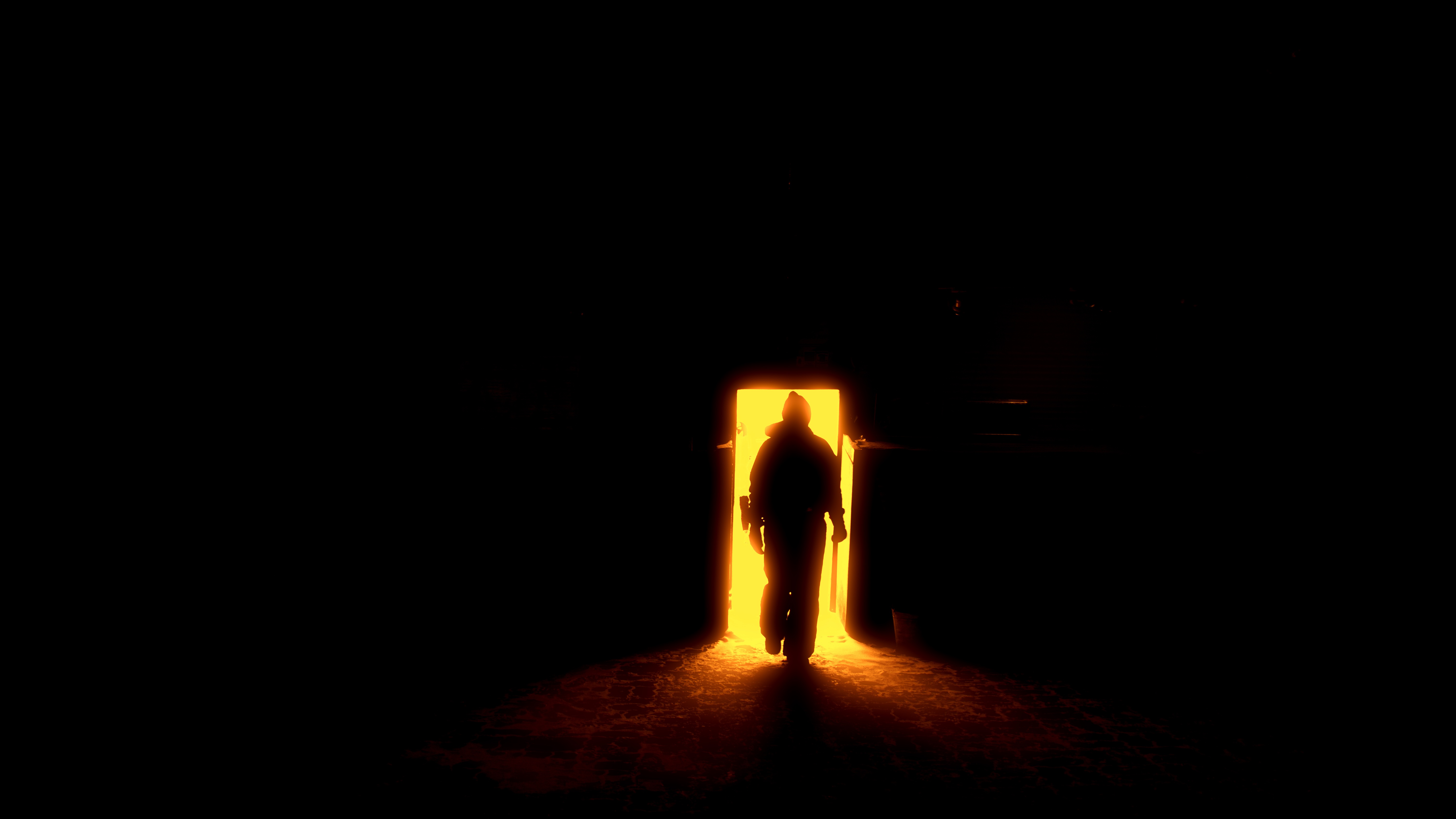
Go to Table of Contents
We’ve finally arrived at the big moment: The PCs are going to discover what really happened to the holy city of Elturel and then they’re going to descend into the depths of Hell!
(If we were to look at the campaign in terms of three-point plotting, the destruction of Elturel is the DISRUPTION that the characters MUST deal with and the revelations at Candlekeep are the REVERSAL, the moment where the whole campaign becomes an entirely different campaign.)
There are a couple of problems we need to address here.
First, as discussed in Part 3, we lack a clear vision of how the pact that sent Elturel to Hell works. On the one hand, the metaphysics of the pact (literally how it works) is simply underdeveloped to the point where it’s mostly just vigorous handwaving. On the other hand, the historical background on how it happened (who made the pact, what their relationship was with Elturel, when the pact was made, etc.) is riddled with continuity errors (both in terms of Descent Into Avernus itself and also in relation to preexisting continuity).
Second: We’ve reached the point where the PCs plane shift to the Nine Hells!
The book so blithely presents this as the next thing that happens (it’s the name of the book!) that it might take you a moment to realize that the PCs have absolutely no reason to do this.
“But they’ve just learned that the city of Elturel has been transported to Hell!”
Uh huh. So what?
They’re 5th level PCs. They have no special resources or knowledge that put them in a unique position to solve this problem and we’ve already established that Elturel is filled with high-level paladins, spellcasters, and others that obviously haven’t been able to solve the problem. In fact, since the PCs have no idea how to solve the problem, the solution could just as easily be found in Waterdeep or the Elturian crater or Iriaebor as in Avernus!
Frodo taking the One Ring to Mordor? Sure. He has a unique vector for destroying Sauron’s power that no one else in the world has.
Some random halfling without the One Ring heading to Mordor to “save the day”? It makes no sense. It’s suicide.
Yes, there are some NPCs standing right there who can say, “I have received a message from the Great DM in the Sky! Thou art supposed to get on the train!” if the players haven’t intuited the rails. But we can do better than that.
LORE OF THE PACT OF ELTUREL
Note: As with other “Lore” sections of the Remix, this material should be considered authoritative. Any place where it contradicts the published version of Descent Into Avernus is a deliberate change. Ignore the published version and use the continuity described here.
At this point we’re going to be providing a broad overview for both the metaphysics of Elturel’s fall (providing a framework for how this could be done to any city) and the history of Elturel’s fall (i.e., the specific events for how it actually happened).
As we dive into the history of Elturel, it may be useful to know that a lot of this is based on a mistake: When writing the 4th Edition Forgotten Realms Campaign Guide, Rich Baker confused Elversult (which had an artificial sun) with Elturel (which now ended up with an artificial sun). See Addendum: A Textual History of Elturel for more details.
THE HISTORY OF ELTUREL’S FALL
In 1439 DR, High Rider Klav Ikaia led an expedition of Hellriders into the High Moor. A feral vampire had begun turning large numbers of orcs, trolls, and ogres into vampire spawn which were threatening the peace of border communities that had been placed under the protection of Elturel’s Guard. The expedition was a success and the feral vampire, along with most of its spawn, was destroyed. Unbeknownst to the rest of the expedition, however, High Rider Ikaia had become infected.
The new vampire lord of Elturel kept his true nature hidden, but the darkness of his curse ate at the city like a cancer. In 1444 DR, the secret was discovered by Naja Bellandi, the High Watcher of Helm. Naja managed to escape from the High Hall before she was turned into a vampire herself, fled through the moonlit shadows of the Garden, and ultimately eluded the vampires hunting her by diving from the Maiden’s Leap into the canal below.
Naja’s discovery and subsequent escape triggered the Night of the Red Coup: High Rider Ikaia and his vampires had already infiltrated the highest ranks of the government; now they swept through what remained, killing or converting dozens. The Hellriders themselves were betrayed, caught off guard, and slaughtered in a vampiric frenzy.
Naja Bellandi, having dragged herself from the canal, returned to Helm’s Shieldhall only to find it an abattoir. She gathered any survivors she could find and sent word to the patrols still operating outside the city. A siege was raised, but the Hellriders were ill-equipped for such an action and their one-time allies had been alienated by High Rider Ikaia’s imperial actions (even before he became a vampire). Inside the city walls, Bellandi ran one of several guerilla resistance groups, but for fourteen days a reign of vampiric terror gripped the city.
THE CULT OF ZARIEL: There was a Cult of Zariel in Elturel at this time, being led by Gargauth. In this chaos Gargauth saw an opportunity. Members of the cult approached High Watcher 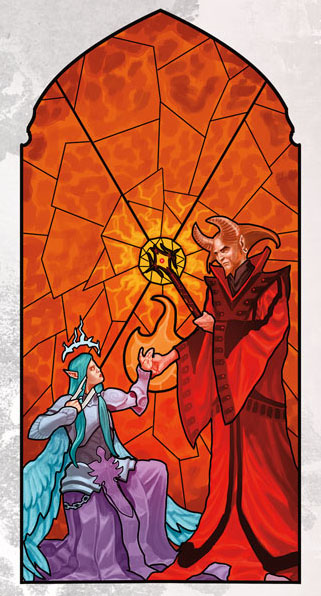 Bellandi and told her that Zariel could help her… all she had to do was agree to a Pact.
Bellandi and told her that Zariel could help her… all she had to do was agree to a Pact.
Bellandi initially rebuffed their offer, but then came the High Harvest Slaughter: Vampires broke into High Harvest Home, the temple of Chauntea, and murdered the entire congregation which had taken refuge there. Hundreds of men, women, and children were killed and the worship of Chauntea in the city was virtually wiped out.
The Zarielites came again, and this time Bellandi accepted their offer. She formed a Pact with Zariel, accepting the Archduchess’ help in overthrowing High Rider Ikaia. In return, the entire city would be forfeit to Zariel in fifty years. (Bellandi believed she had bargained well in gaining the fifty years, but in reality Zariel needed that time anyway to secure her grip on the city.)
That night the Companion arrived in the sky above Elturel. The vampires were taken by surprise and most were destroyed by its “holy” light, although High Rider Ikaia himself escaped into the catacombs beneath the city.
Note: The inner mystery of the Cult of Zariel claims that they have been secret puppetmasters in Elturel ever since Zariel first rode into Avernus in the Charge of the Hellriders. Although it is perhaps possible that the local cult dates back that far in one form or another, if they had actually been pulling strings the entire time, the city probably would have fallen to Hell long ago.
AFTER THE COMPANION: High Watcher Bellandi became High Observer Bellandi and began the painful process of reconstruction. Only she and the Cult of Zariel knew of the Pact that had been made, and in her hubris Bellandi believed that in the fifty years she had left that she would either be able to find a way of breaking the Pact or, perhaps, evacuate the city or find some other solution for the people to escape Zariel’s snare.
In 1446 DR, the Cult of Zariel had Bellandi assassinated.
Bellandi was replaced by High Observer Cathasach Restat, one of the founding members of the Order of the Companion. Restat was a good man, completely ignorant of the Pact that had been made. In 1448 DR he converted to the religion of Torm, a god of order and righteousness who was growing popular in a city desperately craving such things. It was under Restat that Elturel became increasingly theocratic, with the Order of the Companion becoming ascendant over the Hellriders, the High Hall reconsecrated as a temple to Torm, and Restat himself becoming not merely the High Observer, but the High Observer of Torm.
The reign of High Rider Ikaia had been a true gift to the Cult of Zariel. With the vampires’ death, all the upper levels of the Elturian government had been stripped away. The cult stepped into the power vacuum, placing their people in key positions throughout the new government. Although High Observer Restat was not a Zarielite, this process only accelerated after Bellandi’s assassination, and they also established auxiliary cults in the cities conquered by the newly christened empire of Elturgard. Eventually they were ready to take the next step.
High Observer Restat’s heir apparent was a popular paladin named Tamal Thent. In 1479 DR, she and her entire retinue mysteriously disappeared near the Boareskyr Bridge. (They were ambushed by a company of Zarielite Hellriders.) When Restat died in 1481 DR, Thavius Kreeg, a member of the Cult of Zariel, became the new High Observer instead. He’s ruled the city for the past thirteen years.
Design Note: If you wanted to keep more strictly consistent with the idea from Sword Coast Adventurer’s Guide that Thavius Kreeg has been High Observer for forty years, you can eliminate Cathasach Restat from this timeline: Bellandi is assassinated, it looks like Tamal Thent is going to succeed her, but then she mysteriously vanishes and Kreeg gets the position instead.
Since the continuity is a mess anyway, I felt comfortable making this change, however. Primarily I think it’s more interesting if the person who makes the pact with Zariel ISN’T a cultist, but then that person can’t stick around too long. I also think it’s more interesting if Thavius Kreeg is a younger man and the heir of a decades-long scheme, rather than the mastermind who has orchestrated Elturel’s fall from the beginning. This creates a gap which has to be filled, and I also think Elturgard has a bit more heft as a political entity if there’s an actual succession of rulers (as opposed to it being a one-generation gimmick). I also found it was a lot easier to explain the rise of Torm in Elturel once Restat was in the picture.
I also played with the idea of simply abandoning the city’s unexplained conversion from Helm to Torm, particularly once I realized how natural the High Watcher → High Observer progression was. But the Torm stuff is pretty baked in at this point, and I think this version works well.
THE METAPHYSICS OF ELTUREL’S FALL
The goal of Zariel and Gargauth is to have a mass recruitment of new devils for the Blood War. They do this in two ways:
- They corrupt the oaths of the Hellriders and the Order of the Companion. When the Pact’s term comes due, any high knights in Elturel are immediately claimed by Zariel. As detailed in Part 3B, this is also true for any of these knights (or their descendants) who die on the Material Plane before Elturel sinks into the Styx (and the Pact is completed).
- When Elturel sinks into the Styx, the waters of the river will wash over the city. Not only will everyone in the city be drowned, but their minds will be wiped clean. Dying in this immediate state of tabula rasa at the very moment that the Pact completes will allow Zariel to scoop up the souls of everyone in Elturel, giving her 40,000 new foot soldiers to throw into the Blood War.
THE COMPANION: The role of the Companion in Zariel’s scheme is multifaceted. First, of course, it was the price paid to High Watcher Bellandi to form the Pact, and its light was, indeed, malefic to the undead.
Second, the Companion was the source for all the “holy” spells cast by the false clerics and “paladins” of the Cult of Zariel. Although this could only be done within the Companion’s light, it allowed them to infiltrate churches and organizations in Elturgard that would have otherwise been inaccessible to them. (Note that the Companion could be seen as far away as Boareskyr Bridge and Berdusk as a bright star hanging low in the sky.) This effect was achieved due to the planetar trapped within the Solar Insidiator (aka, the Companion): The artifact effectively “borrowed” the planetar’s energy signature, harvesting and manipulating it not only to create the “holy” spells, but also to mask Zarielites from common divinations that would otherwise have exposed them.
Third, transporting an entire city to another plane takes a lot of magical mojo. The Companion’s light, having bathed Elturel for fifty years, slowly infused the buildings, streets, and even people. This created an incredibly huge negative etheric charge. When the Pact came to an end, Zariel flipped the “polarity” of the Companion, snapping the charge back to neutral in an instant and releasing a huge wave of energy that helped propel the entire city into Hell.
Note: This effect, although quite vast, was also quite subtle. It’s possible that various arcanists became aware of something strange in the Ethereal Plane around Elturel, particularly in later years. Some might have even begun researching it. If so, they would have been either assassinated or discredited by the Cult of Zariel.
RELIGIOUS SUBVERSION: There was one last and extremely vital requirement for Zariel’s plan: Elturel had to be stripped of its divine protection. If the forces of Hell just swoop down, kidnap thousands of a god’s followers, and whisk them off to Avernus, they’re inviting the god (and probably a bunch of their pantheonic friends) to intervene. Maybe you can do it in a pinch, but it’s a lot easier if you can first nudge those people out of the god’s column so that the god no longer has divine standing (like legal standing, but more complicated) to come stomp on Avernus.
Of course, you also have to be subtle about all of this. Otherwise, gods like Helm and Torm will send visions to their meddlesome priests and tell them to start looking that second gift sun in the mouth. So Zariel’s plan proceeded gradually across several years:
- Start by sowing confusion about the origin of the Companion. Let every god just kind of assume that some other god must have been responsible.
- Institutionalize and escalate this with the Creed Resolute, which — in the name of Unity — forbids any who take the oath from claiming that the Companion was the gift of any particular god. Let that belief seep into the general populace: The Companion was a gift from all because it was a gift from none. It is simultaneously divine, but not of any god.
- Spend decades infiltrating every major religion in Elturel. Slowly corrupt their religious services (either from the top down or bottom up) so that they are venerating the Companion. (A fairly typical form is to give some form of thanks to the divine gift of the second sun, which “walks beside us every day, a constant companion to us in times of trouble.” Importantly, it’s a divine gift which custom and, increasingly, engrained belief says you cannot ascribe to your own god. So your religious rites are now venerating a “divine” thing which is not your god.)
To seal the deal, three years ago in 1491 DR Thavius Kreeg passed the Unity Laws. These subtly torqued the, by now well-established, Elturian belief that Unity meant not ascribing the Companion to any god so that Unity now meant explicitly giving thanks to the Companion before your god.
Unity Prayers were to be given before any public event. These were initially limited to non-religious events, but, without any explicit government action, the Zarielites within the churches soon added them to most religious services, too. Their forms varied, but were typically something like:
Before all, we give thanks to the Companion, whose light gives us the bounty of the fields and shields us from the dark; whose eternal presence is a constant ally against all those who would threaten Elturgard. Let all those who stand within its blessing remember that it is a beacon of righteousness, which we will follow to our greater glory.
Unity Tributes were erected in various public spaces — small sculptures of the Companion or the emblazoning of the twin sun heraldry of the Order of the Companion. Although labeled “tributes,” it would be more accurate to call them shrines. Coins were often dropped into unity fountains for good fortune. In some cases, people would “pay tribute” by leaving small effigies of themselves under an idol of the Companion — a custom which started with knights leaving Elturel to go on patrol (so that they could symbolically always be within the Companion’s light), was picked up by merchants similarly leaving the city on various journeys, and eventually spread to the population in general even if they weren’t going anywhere. Eventually, these tributes were added outside (or even inside) churches and temples throughout the city.
You can’t quite legislate a requirement that people say things like, “Bless the Companion!” when they receive good fortune; or “We thank the Companion for our refection” before a meal; or “If Sajra agrees to marry me, I swear I’ll never leave the Companion’s light!”, but you can certainly lead the horse to water.
The end result of all this was that the churches of Elturgard were suborned into a form of idolatry aimed at the Companion. To be clear, at the time of Elturel’s Fall there were many people who actually were still true and faithful followers of various gods (and many more who thought they were faithful followers and could probably be guided back onto the true path if given the right leadership). Just not enough of them. Distanced from Elturel so slowly that they didn’t even notice it was happening, none of the gods saw what was coming and none were left with divine standing when the final hour came.
Design Note: The religious subversion stuff is getting a lot more attention here than seems immediately warranted. It doesn’t play an essential role in the Fall of Elturel and, unlike the other metaphysical aspects, the PCs don’t really need to understand any of this to make the scenario work. However, I found it interesting. I think it will also have an impact as the PCs begin exploring Elturel; and I think it also ends up being insightful for roleplaying Elturian characters.
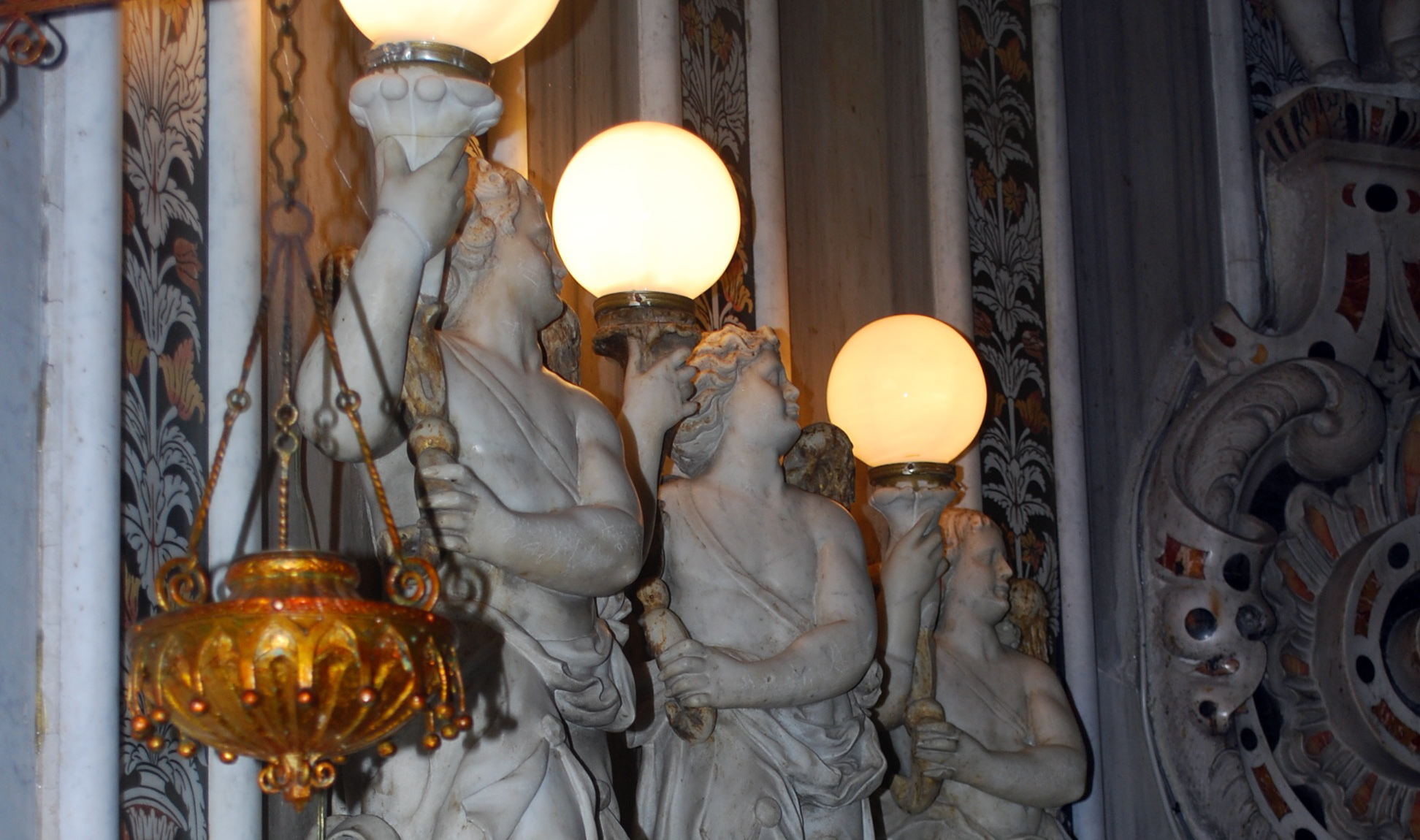
THE PACT
On this, the fifteenth day of Flamerule, in the one thousandth, four hundredth, and forty-fourth year of the Dale Reckoning, I, Naja Bellandi, by my authority as the High Watcher of Helm and the highest surviving mortal authority in the city of Elturel, do swear this Oath to pledge my soul and the entire city of Elturel unto the Archduchess Zariel, to be so passed into her custody at the end of fifty years, the latter to be transported to Avernus and the former to be taken into her service.
In exchange for which, Zariel, the Archduchess of Avernus and faithful representative of Asmodeus, the Archfiend, Lord of the Ninth and Nessus, Supreme Master of the Nine Hells, bestows the Gift of the Companion, a Solar Insidiator which shall be placed in the sky above Elturel for at least the term of this agreement and whose light will scourge the undead from the city. She further swears to render whatever aid may be necessary to end High Rider Klav Ikaia’s reign if the Gift of the Companion prove insufficient to this task.
In consideration and honor of these mutual covenants, we sign in blood upon the day and year first written above,
Zariel, Archduchess of Avernus
High Watcher Naja Bellandi of Elturel
CREED RESOLUTE: The Creed Resolute was the founding document of the Order of the Companions, but in the 1470’s it was also “adopted” by the Hellriders. (This was actually somewhat controversial at the time, and it was more forced on them by the High Observer of Torm than freely taken up. By 1494 DR, however, this controversy is largely forgotten and the Hellriders mostly embrace the Creed enthusiastically.) The full Creed is actually a lengthy document proscribing and prescribing various courses of action that are “right and proper” for a knight. This includes some guidance that’s ethical and moral (mostly chivalric code-type stuff), and other guidance that’s more practical (like codes of dress and the list of arms and armor which any follower of the Creed must maintain). Even Elturians who haven’t sworn the oath to uphold the Creed Resolute will often say things like “recall the Creed.”
The crucial bit in terms of Elturel’s Fall, however, is the oath the knights swear to uphold the Creed:
I solemnly pledge my soul and blood and blade to serve as a knight of Elturel and share the Oath of the High Observer in honoring the Gift of the Companion. I shall guard the realm of Elturgard and all those lands which lie under Elturel’s Shield, upholding the laws of Elturgard and the commands of the High Observer. I shall live my life in strict accord to the Creed Resolute, placing it and this oath above all other doctrines. I shall be bound to all others who swear this oath, declaring them now and forevermore, whether in life or beyond the veil of death, to be my brothers in arms. To ensure the perfect harmony of our brotherhood, I shall permit no difference in faith to come between us, but rather hold the Companion, which I shall never attribute to one god or another, as our common star.
Metaphysically, there are two important things to note:
- They pledge their soul to “share the Oath of the High Observer.” The implication is that this is the oath to uphold the Creed Resolute, but, of course, that’s not the case. It’s actually the oath that High Observer Bellandi made to Zariel in the Pact. Everyone swearing this Oath sells their soul to Zariel, just like Bellandi did.
- They also pledge their “blood.” This is the clause that damns all of their offspring and leads directly to the murders described in Part 3.
Pro tip, kids: Don’t swear to oaths you’ve never seen.
Design Note: I don’t know if this was intentional (I don’t think it was), but in Middle English the word “resolute” also meant “paid,” in the sense that one had paid a debt.
TOME OF THE CREED RESOLUTE
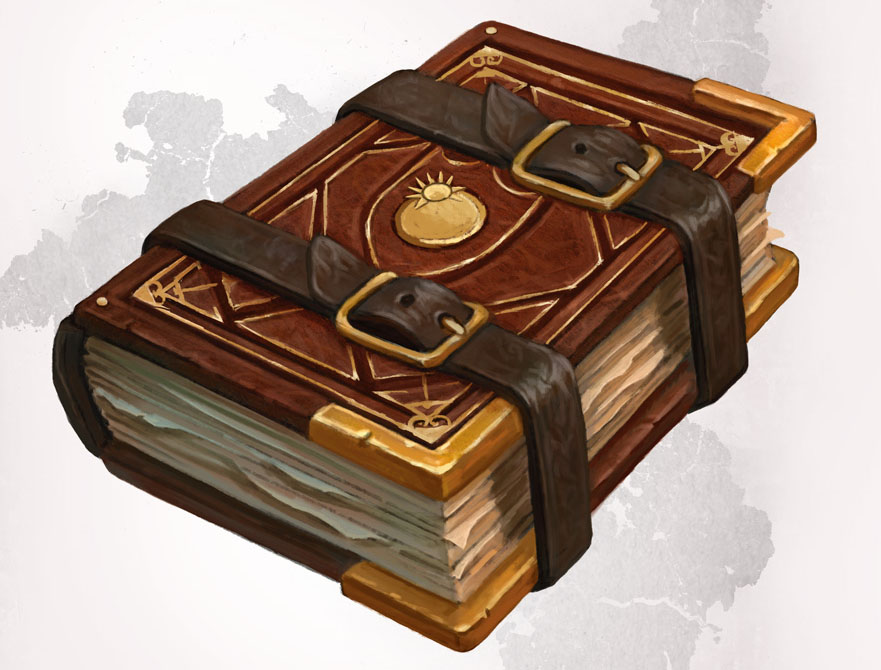
Everyone who swears the formal oath to the Creed Resolute pricks their thumb and places their blood-mark in the Tome of the Creed Resolute. Their signature then magically appears within the book (which also magically gains pages whenever needed). The Tome dates back to the founding of the Order of the Companion and thus contains the signature and blood-mark of every knight who has ever sworn the oath.
The first page of the Tome has the text of the Oath. The next several pages contain the current text of the full Creed Resolute. The particulars of the Creed (but not the Oath) can be modified by the High Observer and the High Knights of Elturel, and has been on several occasions over the last several decades.
What no one living knows is that if you rip the Tome apart, you will find the full text of the Pact between Zariel and Naja Bellandi written in golden ink (actually the blood of a celestial) on the inside of the book’s spine. The Tome of the Creed Resolute is not a true infernal pact, but it is an important focus for binding the soul and blood of those who swear the Oath to the original Pact. Importantly, it prevents anyone who has sworn the oath from forswearing it and, thus, escaping Zariel’s claim to their soul.
If you destroy the Tome of the Creed Resolute, it will not free those who have already been claimed by Zariel. But it will:
- Free the descendants of Elturian knights.
- Stop Elturian knights from turning into devils the moment that they die in Avernus (see Part 5).
- Allow Elturian knights to free themselves entirely by forswearing the oath they swore and receiving the benefit of a remove curse
Pherria Jynks currently has the Tome of the Creed Resolute in the High Hall of Elturel.
Go to Part 4C: At the Threshold of Hell
